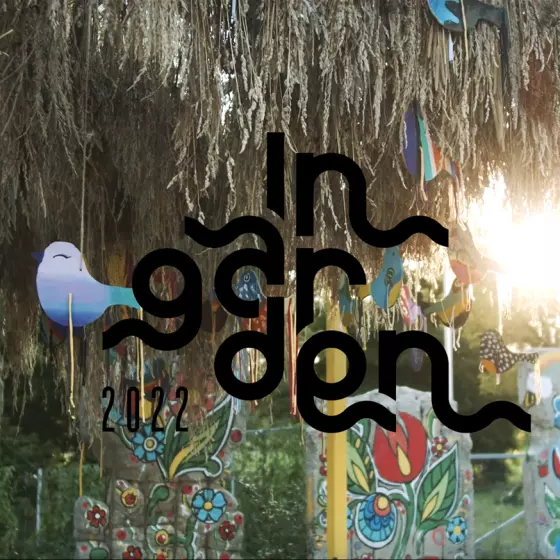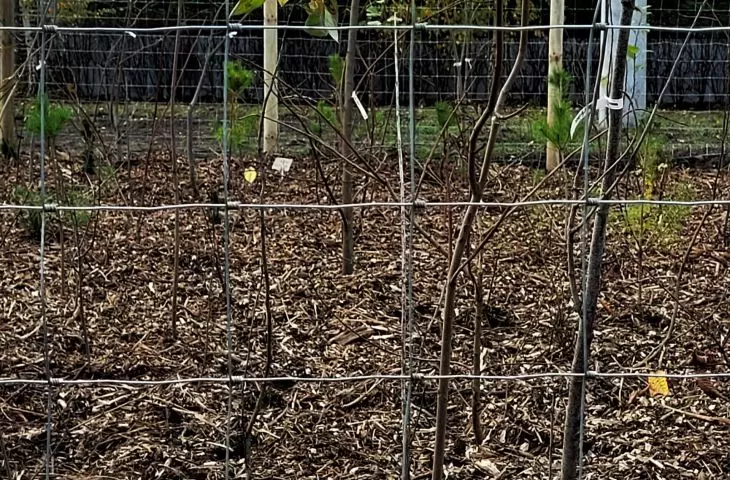We already know pocket parks quite well. Pocket forests are still a novelty. A second enclave of this type has been established in Poznań, and more are in the pipeline. What should they look like? The devil is in the details. So how to create pocket forests and how to avoid greenwashing done with them?
The action of planting a pocket forest took place last Saturday in Poznań, at the junction of the downtown and Wilda districts, not far from the Warta River. On a triangular plot of 250 sq. m. at the intersection of Bielniki and Piastowska streets there were 715 tree and shrub seedlings. For now it is difficult to see them behind the protective (and temporary) netting, but in a very short time they will form a dense multi-species grove. This is because they were planted using the method of Akira Miyawaki, a Japanese naturalist who has been developing a method of rapid greening of urban areas since the 1970s.
lots, dense, fast
Miyawaki's recipe is dozens of plant species planted densely in a small area. These should be native species and selected so that - in the right proportions - they form four tiers of vegetation: high treetops, low treetops, shrubs and undergrowth. Plants planted in this way are to create a green enclave 30 times denser and 100 times more biodiverse than one realized in the traditional way. Plant growth is also supposed to be ten times faster. After the initial period, the plants are left to themselves - without horticultural interference. The pocket forest created in this way helps purify the air, enriches the space, and also has an educational function.
Poznan's newest mini-green enclave was created thanks to an amendment to the city budget submitted by three KO councilors from the Wilda district. The work, under the expert guidance of naturalists, was carried out voluntarily by residents (a list of plants and a detailed description - on the plaque seen in the photo below).
Poznan pocket forest - corner of Piastowska and Bielniki streets
photo: Jakub Głaz
Meanwhile, the first project of this kind was implemented a year ago by UWI Inwestycje - a Poznan developer, which enriched the area between the blocks of flats it built on Milczanska Street with a pocket park . On five hundred square meters, representatives of the company and residents, with the support of the Urban Greenery Board, planted about 1,500 trees and shrubs.
potential and phytosociology
At the end of last year we published an interview with Kasper Jakubowski, the initiator and co-author of the developer's project. This time we ask Magdalena Garczarczyk, a Poznan landscape architect and - in recent years - an activist working for the benefit of Poznan's greenery, for her opinion on plans to create more enclaves of this type in the city. Garczarczyk notes that:
Pocket forests make sense, but under several conditions. First and foremost, they should not be created at the expense of trees that grew in the area before. One should carefully check what is already growing in the chosen area and what the biological potential of the habitat is. Only after such an analysis can species be selected that are likely to adopt best and coexist in a densely planted plot. I recommend expanding your knowledge of phytosociology here.
Garczarczyk points out that before selecting a site for a pocket forest, it is essential to check potential collisions with underground infrastructure. This is especially true for grassroots projects.
Indeed, it is extremely valuable to involve residents in joint tree planting. This is both integration and education. It is therefore important to avoid situations in which the results of this work would later have to be destroyed for infrastructural reasons.
It is also valuable that planting and maintaining a pocket forest is cheaper than creating a typical city square. The city of Poznań therefore has plans to create more enclaves of this type. However, Poznań councilors have stipulated in the media that squares will also be created, and pocket forests will not completely replace them. Simply: they will be created in such places where squares would not be arranged anyway.
pocket forest in Poznan, - 250 sqm, on the corner of Piastowska and Bielniki streets, the area is fenced temporarily to protect the seedlings
photo: Jakub Głaz
is not always a substitute!
Whenever pocket forests are mentioned, there is also a recurring concern about greenwashing, that is, sham environmental activities aimed at warming the image, both of private developers and, for example, politicians who initiate tree planting. Garczarczyk comments:
One can assess the situation in this way when - only one such enclave is being created within a radius of many kilometers, especially if it accompanies some large private development. However, if there are many more such developments in the city, collectively they may already have a beneficial effect on the microclimate, and as wildlife habitat. They can also be a valuable addition to the green urban corridors that co-create the entire green system.
And one more warning from an architect and activist: keep an eye on pocket forests to ensure that they are not treated as compensatory plantings for trees felled elsewhere. A large number of trees in a small area is - from both a natural and landscape point of view - something quite different from freely growing specimens.



























